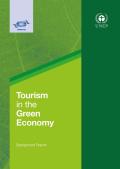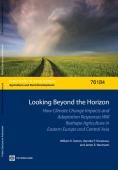
This report was launched at the first Global Human Development Forum which brought together high-level experts from governments, corporations, civil society and international organizations to examine the global policy changes required to ensure a sustainable future for people today and for generations to come. The report, supported by 13 U.N. agencies, calls for a transformation to integrated policy making, where social equity, economic growth and environmental protection are approached together. It is a contribution of governments, experts, researchers and development practitioners ahead of the ‘Rio+20’ U.N. Conference on Sustainable Development in June in Brazil where participants will come together to discuss and shape new policies and measures to promote prosperity, reduce poverty and advance social equity and environmental protection.
The Road to Rio+20 publications, by the United Nations Conference on Trade and Development provide a series of essay compilations, all based around the ‘what’, ‘why’ and ‘how’ of making the transition to a development‐led green economy. Road to Rio+20 comprises three issues released in March 2011, November 2011 and June 2012.
The first issue aims to contextualise the green economy, examine the pros and cons from different perspectives, identify the critical issues and provide a case study to look at a specific green economy initiative. The second issue provides a series of real world references for governments, businesses and civil society; what is referred to in this volume as ‘pathways to a development‐led green economy’. The third issue moves forward the debate, focusing primarily on commitments and outcomes and the potential of Rio+20 to generate innovative ideas, policies and to consolidate sustainable development strategies of governments.

The uptake of renewable energy (RE) has been identified by a number of governments as a primary means for mitigating CO2 emissions from the electricity sector, and for making the transition to a low-carbon economy. The electric power output of some RE technologies, however, including those based on intermittent wind and solar energy, can vary considerably over short periods of time and thereby introduce instability into the electricity system. The risk of instability increases with higher shares of intermittent power sources connected to the electrical grid. Different means have been used to deal with this intermittency problem. Cross-border trade in electricity appears to be one of them since it enables countries to gain access to a more diversified portfolio of plants, producing over a wider geographic area. Preliminary results from an examination of the European electricity market confirm the importance of cross-border electricity trade in increasing the effective capacity factor of intermittent plants in the context of a growing share of intermittent renewables in the power sector.
